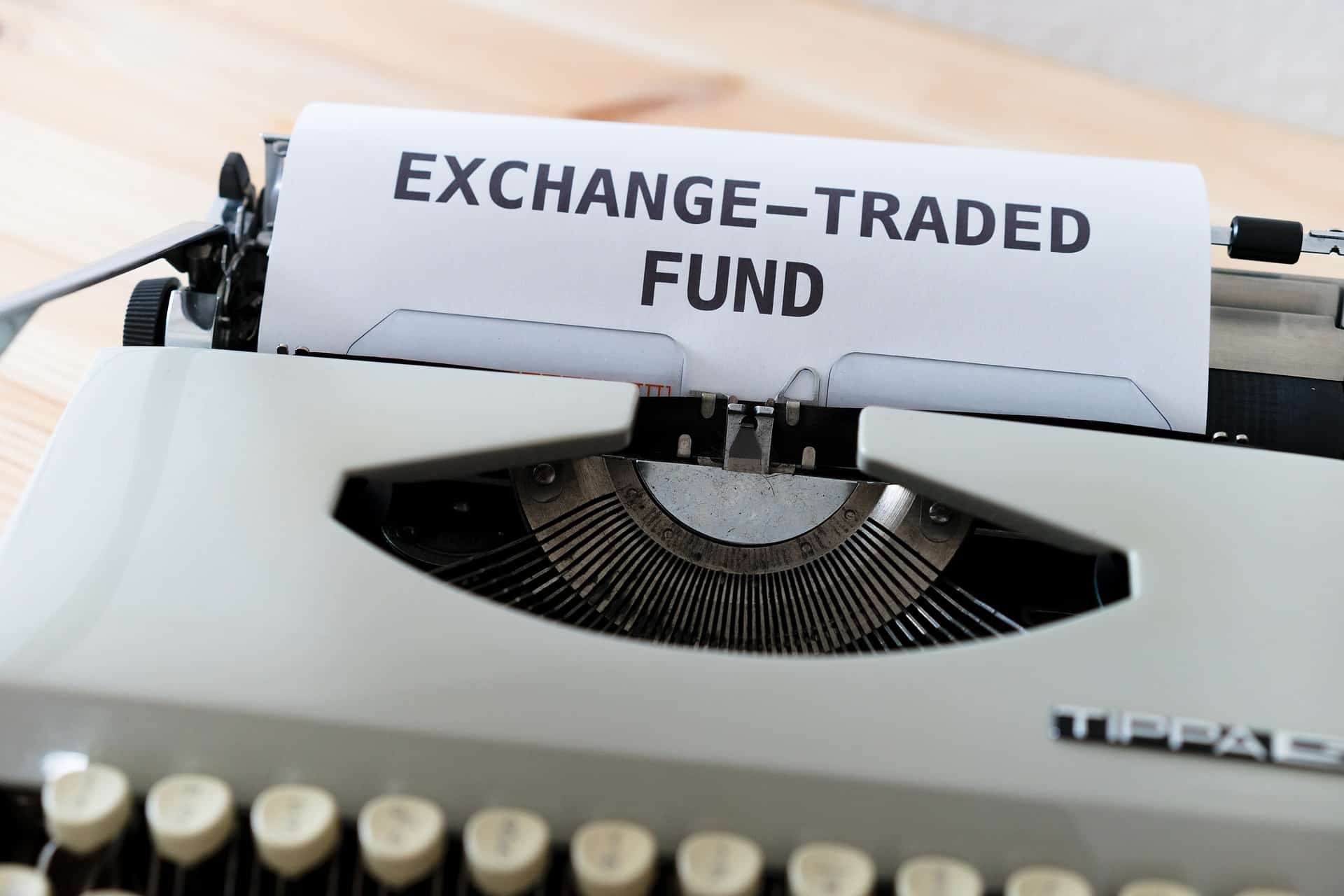Simple Ways to Invest Money in Canada to Finally Get Rich
Nowadays, there are tons of ways to invest. If you’re new to this and want to go solo instead of getting help from a financial advisor, feeling anxious about choosing the wrong investments or getting scammed is normal.
In this article, I will highlight some of the best ways to invest money in Canada. Not only will this article help you avoid scams, but it will also help you pick out investments that are right for your overall time horizon, risk tolerance, and investment goals.
Keep in mind, don’t feel like you need to put all your eggs in one basket. Many people invest in multiple methods, or even all methods, listed below.
With that said, let’s jump right into it.
What are the best ways to invest your money in Canada?
- Stocks
- Exchange-Traded Funds
- Bonds
- Guaranteed Investment Certificates
- High Interest Savings ETFs
- Cryptocurrency
- Real Estate
- REITs
- Peer to Peer Lending
- Mutual Funds
Stocks
The stock market is one of the most significant investments in history when it comes to long term investing and compounding wealth. The S&P 500, a stock market index that tracks the 500 largest companies in the United States, has returned around 7% after accounting for inflation annually for over a century.

If you had invested $10,000 in the S&P 500 a century ago without touching it or adding any additional contributions, you would have $8,677,163 right now after the impacts of inflation, or a whopping 867 times your initial investment.
This is the true power of compounding investment returns; stocks provide that over the long term, especially when they’re placed in tax sheltered accounts like the Tax-Free Savings Account (TFSA) or Registered Retirement Savings Plan (RRSP).
Stocks represent partial ownership of a company and its earnings. If you own a share of Telus, for example, you own a portion of that business and are entitled to a portion of its profits.
Stocks trade on a stock exchange, an open network where investors like yourself can buy and sell shares from other investors and institutional investors.
Not only do stocks provide the opportunity for significant capital appreciation over the long term, but they also provide dividends, which is a company returning profits to shareholders. Typically, you’re paid a dividend every quarter, but some do pay on a monthly basis.
Stocks are not without risk, however. Stocks can go up and down quite violently. We have witnessed numerous stock market crashes over the years, the most recent being the COVID-19 pandemic crash in March 2020. Your stock portfolio could have been down 30-40% in weeks. I know mine was.
This is because stock prices are primarily driven by supply and demand. When investors panic and sell, prices go down. This is why, in reality, the most significant risk of owning stocks is said to be yourself, your emotions in particular. A single emotional mistake can set an investor back years.
Who should own stocks? Primarily those with a medium risk tolerance and a long time horizon. Although the stock market is volatile over the short term, it is a proven wealth-generating machine over the long term. As a result, you don’t want to buy stocks to sell them in a year when the market is simply unpredictable.
Instead, you want to hold them over 5+ years or longer. Optimally, you want to buy strong businesses today that you will never need to sell.
Unfortunately, human nature makes this quite difficult. People are prone to making emotional, panic-driven decisions. They tend to buy stocks at high prices due to the euphoria and sell them at low levels when they should buy them instead.
If you want to start, click here to read our guide on buying stocks.
Exchange-Traded Funds (ETFs)
Trading much like a stock, an exchange-traded fund is something that can be added to an investment portfolio for instant diversification. What do I mean by this?
When you buy an exchange-traded fund, you typically purchase something with many underlying assets. Let’s take a popular, and one of the oldest exchange-traded funds, the iShares TSX 60 ETF, which trades under the ticker XIU, as an example.

It only takes you one click to buy this ETF. However, when you do, you now own 60 of the largest companies on the Toronto Stock Exchange, including Royal Bank, Shopify, Bank of Montreal, BCE, Telus, Enbridge, and so much more.
Exchange-traded funds can do much more than expose you to 60 different stocks. In fact, you can buy ETFs with 10,000+ holdings, exposing you to the entire global market. In addition, you could buy an ETF that gives you exposure to gold bullion, crude oil, or even one that takes the opposite stance of what major investing influencers on television do (and no, I’m not kidding about this.)
So, why ETFs over stocks? Simplicity and convenience, for the most part. Instead of researching and buying individual companies, one can get exposure to many companies with a click of a button. In addition to this, instead of going out and trying to manually buy bonds or money market funds, one can simply buy them in an ETF.
However, the downside of ETFs primarily comes from the fact you will pay a management fee for the team to manage your ETF, and you will also underperform the respective index that the ETF aims to track.
For example, going back to the example of the TSX 60 Index, XIU. If you were to buy XIU, it would underperform the respective stock market index it aims to track, the TSX 60. Why is this? Management fees and something called “tracking error” in the investment world.
I won’t get into this too much in this piece. But know if you deploy a passive investing strategy with ETFs, your investment returns are likely to reflect that of the index that ETF tracks before investment fees are paid. With stocks, however, there is a chance for an investor to outperform the markets and achieve higher-than-expected returns.
So who are ETFs for? Primarily those who want to maintain a passive investing strategy. Buy a set amount of an exchange-traded fund at set intervals and forget about it. For someone who wants a little more active management, stocks will likely be your go-to.
Bonds
A bond is a form of fixed income. What exactly is fixed income? Well, for the most part, this asset class aims to not only pay you a set amount of interest every year, called the coupon rate, but also aims to preserve your capital.
At its core, a bond is a straightforward investment vehicle, and if you’re buying high quality bonds, it’s one of the safest investments you can make in Canada. If a company came to you and said:
“I need to borrow $10,000 from you. I’ll pay you 5% a year and in ten years, I’ll pay you back your $10,000. In addition, I’ll attach our warehouse to the loan as collateral so that if we ever get in trouble, you should get your money back regardless.”

You have just been offered to buy a bond from the company. You’ll be paid $500 a year, often structured to pay two payments of $250 every six months. You’ll get those payments every year for ten years; at that point, the bond issuer will pay you your initial capital back.
The theory behind a company issuing bonds is that they can earn more than what they’re paying you in interest by investing the injection of capital you, as the debtor, have given the company.
You do not need to hold the bond until maturity. As a holder, you do have the potential to sell the bond. However, they fluctuate in price. The best way to reduce the overall risks of holding bonds is to buy and hold them to maturity.
There are also several different lengths of maturities when it comes to bonds. One year, five years, ten years. Typically, the longer the maturity date, the higher the coupon rate you’ll receive.
There are two types of bond-like fixed-income investments a company issues. One is the bond we talked about above. The other is a debenture. The purpose of this article is not meant to explain the significant differences. Still, to sum it up in a single sentence, a bond is backed by a physical asset of the company, while a debenture is just a promise to pay you your money back.
High-quality bonds from rock-solid corporations are about as low-risk investment as it gets. Default risk, or in layperson’s terms, the risk of a company going bankrupt, always does exist. But suppose you find corporations with high credit ratings and a long history of debt repayments. In that case, they’re about as guaranteed as it gets.
Speaking of guaranteed, other types of bonds, such as Bank of Canada bonds or Treasury Bills, are guaranteed by either the Bank of Canada or the Federal Reserve. They typically pay lower interest, but there is a lower yield because they carry no default risk.
Generally, bonds are considered a low-risk investment that won’t fluctuate much in value except in extraordinary circumstances. If you’re risk-averse, they’re an option to add to your portfolio.
Guaranteed Investment Certificate (GIC)
Guaranteed Investment Certificates, or GIC for short, are gaining popularity today. Before the COVID-19 pandemic and even amid the pandemic due to record low-interest rates, GICs never yielded enough to garner interest from serious investors.
However, to fight inflation, policymakers have raised interest rates at a record pace, and now with GIC rates high, they’re a viable option for many Canadians looking for the best ways to invest their money.
As you can tell by the name, GICs are guaranteed. This means that much like a bond, you’ll give your money to a financial institution, and they’ll promise you an annual interest rate. You could head to a bank like Equitable Bank and buy a one-year GIC for 4.75%.
This means you’ll earn 4.75% on your money for a year. After that year has passed, an Equitable Bank GIC will give you your original investment back. If you bought a 3-year GIC, they’d pay you 4.75% a year until the GIC matured. You could also grab a short-term GIC with a lower time to maturity.
So, what is the difference between these and bonds? For one, GICs are considered a deposit, which means they’re eligible for CDIC insurance. If you purchase a GIC with a CDIC-eligible institution, your money is guaranteed if that institution goes insolvent.
This is not the case with bonds. If the company you bought the bond from goes bankrupt, the property that backs the bond would be sold off to pay back debtors. However, it is not guaranteed.
Secondly, you cannot sell a GIC; your money is locked in. Some GICs could have early redemption penalties, but for the most part, you cannot touch it for one year if you give a bank your money for a 1-year GIC. If you give them your money for five years, your money remains untouched for five years.
With a bond, you can buy and sell them on the open market. So, you do have the ability to get your money back before maturity.
This is a term in the investment world known as liquidity.
GICs are a perfect spot for risk-averse investors to park cash. They shouldn’t necessarily form a large part of your portfolio, as if they do you’re likely missing out on more significant returns in the stock market. But there is room for them now that they’re paying much more money.
High Interest Savings Account ETFs (HISA ETFs)
Much like Guaranteed Investment Certificates, HISA ETFs are catching on quickly now that interest rates have increased. Why? These ETFs aim to invest money into institutional-grade savings accounts and return the interest to investors. These institutional savings accounts offer much higher interest rates than a retail investor could access.
These funds, which you can read more about here, trade as exchange-traded funds. The fund manager collects capital raised from issuing units of the ETF. It then places that capital into its institutional savings accounts at Canadian banking institutions. Then it gives a monthly distribution back to investors with interest payments.
Because rates were so low during the pandemic, many of these HISA ETFs paid next to nothing. You’d be lucky to earn 0.5% a year. However, it’s a much different story now, with many yielding nearly 5%.
So, what is the difference between these HISA ETFs and a bond or GIC? Let’s take a look.
First off, although these funds are depositing money into savings accounts at banks, your money is not protected by CDIC insurance in this situation. So, this is similar to a bond, but much different than a GIC. The reasoning for this is deposits are typically only protected up to $100,000 an account. Some of these HISA ETFs have billions of dollars in assets under management.
Secondly, arguably the most significant benefit to these ETFs is that they have very high liquidity, meaning you can easily buy and sell them. Despite earning around the same interest as a GIC, they can also be bought and sold anytime the stock market opens.
An additional benefit is that bonds and GICs typically pay their interest semi-annually. HISA ETFs on the other hand will pay them out monthly.
When I was building a home in 2022, I stuck my down payment in one of these ETFs and was receiving $300 a month in near risk-free interest.
Weigh the pros and cons of CDIC insurance and the lack thereof with these, and see if they’re suitable for you. Me personally? I don’t see any of our major financial institutions going bankrupt anytime soon, so I consider them next to no risk.
Cryptocurrency (Bitcoin, Ethereum)
In this day and age, a digital currency is not all that farfetched. Many central banks and governments are developing their digital currencies. Cryptocurrencies like Bitcoin and Ethereum are asset classes that expose an investor to digital currencies outside of the government’s control.

This post is meant to highlight the different types of investments a Canadian can make to earn more with their money. So, I’ll save the extensive explanation of what crypto is and how the blockchain works for another article.
However, I will speak on cryptocurrency’s overall risks and rewards, which can help you decide if you want to invest in this asset.
The large majority of cryptocurrencies today are, to put it bluntly, scams and garbage. This is one reason why many investors are hesitant to enter the space. However, suppose you stick to major cryptocurrencies like Bitcoin and Ethereum, with actual use cases, large market capitalizations, and large followings. In that case, they’re considered strong options to buy and hold over the long term.
Please make no mistake about it, though. Even blue-chip cryptocurrencies like Ethereum and Bitcoin are highly volatile. They can fluctuate in price by double digits in a single day and have been known to gain or lose 30%+ in just a few weeks.
Cryptocurrency should be thought of as any other position inside your investment portfolio. You shouldn’t have half of your portfolio allocated to a single stock, so don’t do it with a single cryptocurrency.
5% of my overall investment portfolio is allocated to Bitcoin, and I keep it that way. Some may find 10% appropriate, and some may find 2% too much. This is up to you to find that sweet spot when it comes to overall tolerance for risk.
Suppose you’re looking to invest in smaller coins. In that case, it’s essential you do so with money you’re willing to lose.
Real Estate
Although real estate has undergone a correction here in Canada, it is still an excellent way for Canadians to grow their wealth with the ability to leverage a small down payment into a piece of real estate.

Even a small down payment of $20,000 can give you the ability to buy a $400,000 home. From there you can either live in that home, pay the mortgage, and sell the house when you’d like for no capital gains, or you could use the property as an investment property and rent it out to tenants.
In Canada, there is no capital gains tax on your principal residence. So not only do you get to have the appreciation of real estate, but you can also get access to the equity when you sell and pay zero taxes.
Being a landlord is not easy. I speak from experience having a rental property for over seven years. However, it did help me accumulate a lot of home equity and ultimately was a very profitable investment. However, know that it takes extensive time, dedication, and patience to be a good landlord.
Historically, real estate has been a strong hedge in terms of inflation.
Those who want to get big in real estate investing often buy an initial property and then utilize the equity inside to borrow more money to purchase more properties. Or they sell that initial property and split the equity into multiple purchases.
Alternatively, there is a much easier way to invest in real estate. It doesn’t get you the leveraged nature of real estate investing. Still, it also only takes a single button click from your online brokerage. Let’s have a look at REITs.
Real Estate Investment Trusts
If you’d like to own real estate without actually having to own real estate, real estate investment trusts or REITs, as they’re better known for, are a great way to get exposure.
A REIT is a trust that is set up to hold real estate. The trust must pay back a minimum of 90% of its profits to investors in the form of a distribution. Because of this, they get specific taxable benefits.
There are multiple benefits to owning a REIT over physical real estate. First, you only really need anywhere from five dollars to $50 to get started. These trusts trade on the stock market much like a stock does, and their prices range.
The second would be liquidity. Because a REIT trades on the stock market, you can sell it like a stock. So within a few clicks of a button, you can be in and out of a REIT.
The same cannot be said for selling a house, and if you need to access the equity quickly inside a home, it is really not that easy.
And finally, an additional benefit would be that there is no hassle in owning a real estate investment trust. The management team collects all rent, maintains the property, and seeks new potential property. All you have to do is sit back and collect the distribution every month.
Peer To Peer Lending
Although peer-to-peer lending has been around for quite some time, it gained a large amount of popularity during the COVID-19 pandemic. With peer-to-peer lending, you often go onto a web portal and loan other Canadians your money.
How much interest you get paid will be heavily dependent on the current debt situation of the borrower, the borrower’s credit rating, and possibly the borrower’s history on the platform itself. The higher risk the lender, the more interest you will be paid on your investment.

Just know that this is a higher-risk form of investing. Even secure loans on peer-to-peer lending networks are simply loans made to consumers and are not the same as a bond from a large corporation or a GIC from a bank.
However, you can reduce your overall risk when utilizing these platforms by sticking to high quality loans and avoiding the no doubt tempting, but very risky, high interest loans.
One of the more popular peer-to-peer lending platforms in Canada these days is a company called GoPeer.
Mutual Funds
Over the last decade or so, mutual funds have taken a bad rap. For the most part, this has been warranted. Banks often sell mutual funds with a high management expense ratio (MER) and overall fees.
However, not all mutual funds are bad, and I decided to add them to this list as it is still quite a large market for Canadians investing in them. Mutual funds are similar to exchange-traded funds in the fact that they own a basket of underlying investments.
This could be things like stocks, bonds, commodities etc. The difference between the two investments is not something we will dive into deep on in this article, but know that the main difference between a mutual fund and an exchange-traded fund is the legal structure of the funds and how they operate.
Mutual funds do not trade like stocks or ETFs. If you want to sell a mutual fund, you must put a sell order in and wait until the end of the day.
Mutual funds are much like any other investment. It would be best to look at past returns, fees you will pay, and whether the fund meets your investment objectives.
As mentioned, many mutual funds get a bad rap due to the high fees. Still, some funds are coming out with lower fee structures to regain some popularity.
Which investments have the best returns in Canada?
Real estate has often been one of the best investments to make in Canada over the last few decades. Because we have a smaller economy, heavily exposed to cyclical industries like oil and gas and mineral mining, the Toronto Stock Exchange does not have as good of returns as our US counterparts such as the S&P 500.
As a result, although it is never guaranteed today and moving forward, real estate has undoubtedly been one of the country’s best investments.
Where to invest $1,000 dollars in Canada?
Figuring out where to invest $1000 in Canada is a complex question. If your time horizon is long and you’re willing to take on a bit more risk, you could invest in the stock market. If your risk tolerance is even higher, you can invest that thousand dollars into cryptocurrency.
For the more risk-averse investors, consider placing that thousand dollars into a high-interest savings account, ETF. or even a GIC.
What are the four types of investments in Canada?
The four most popular investments here in Canada are the stock market, exchange-traded funds, real estate, and fixed-income investments like bonds.
However, in 2023 and beyond, cryptocurrencies like Bitcoin and Ethereum are becoming very popular amongst Canadian investors. They will likely continue to grow as an asset class moving forward.
Where to invest money in Canada for the short term?
If you’re looking to invest money over the short term, you may want to look at a more secure investment that guarantees your capital, such as a GIC or a high-interest savings ETF.
Over the short term, investments like exchange-traded funds or stocks can be highly volatile and aren’t meant to be invested in over the short term. There could be a situation where the economy is poor, or the stock market is down, and you would be forced to sell your positions at a loss.
This is precisely why investments that guarantee your principal should take priority in a short-term situation.
